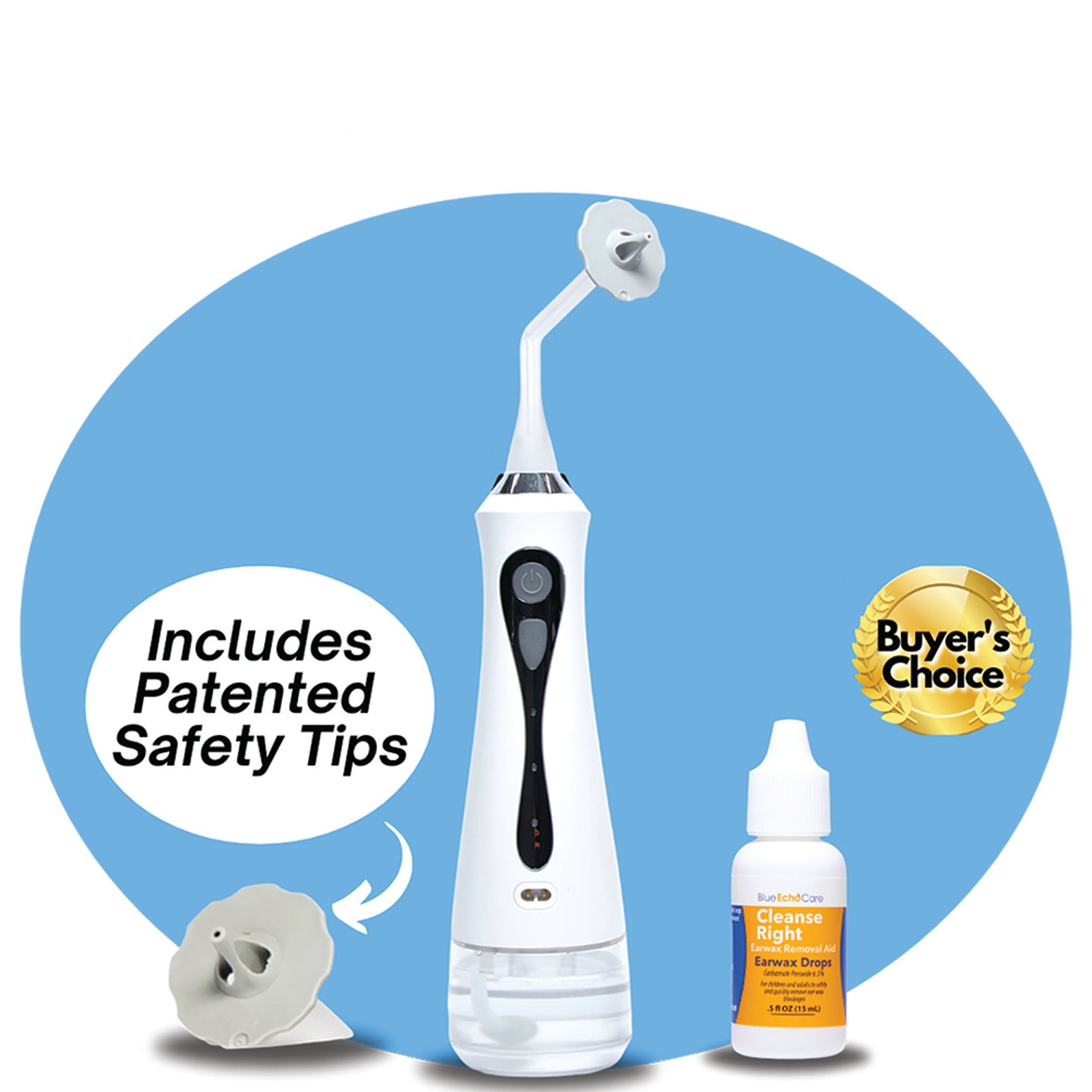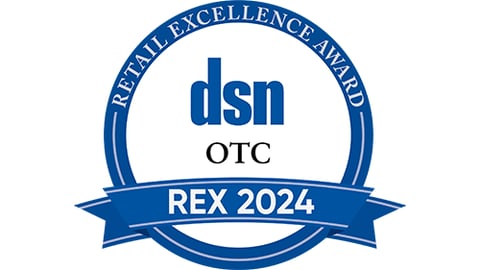Delivering comfort and clarity
Most of us take our sight and hearing for granted—until we encounter conditions that compromise their quality. Those conditions might range from dry or itchy eyes to hearing loss stemming from ear wax buildup or the aging process.
A number of lifestyle trends pose a threat to eye comfort. One such trend is consumers spending more time “staring at their digital devices,” said Scott Berg, general manager, of consumer eye care for North Chicago, Ill.-based AbbVie. By doing so, they tend to blink less, which can contribute to drying of the eye’s surface. The dry-eye threat isn’t limited to seniors, either.
“As a result of increased screen time and other modern external factors, a younger demographic of consumers is now experiencing dry eyes. It’s no longer a condition that only impacts adults over the age of 55,” explained John Ferris, executive vice president, consumer for Bausch + Lomb, Bridgewater, N.J. “In fact, 70% of adults experience eye discomfort due to the excessive use of screens.”
Another trend adversely impacting many consumers’ eye comfort is contact lens wear. As Ferris noted, a third of the 45 million U.S. contact lens wearers suffer from eye discomfort and dryness.
[Read more: HRG’s five notable products from April 2024]
Other lifestyle and environmental factors—including poor sleep habits, diet, allergens, air pollution and more—are modern contributors to eye dryness, irritation or discomfort, Berg pointed out. The aging process also brings with it vision changes, such as reduced tear production.
Comfort’s in Sight
Fortunately for today’s consumers, there are a number of over-the-counter solutions for eye discomfort. And those solutions are welcomed: Almost half of the 70% of adults who experience screen-related eye discomfort, for example, use OTC lubricant eye drops to get relief, Ferris noted.
New offerings promise to up the comfort game.
For its part, AbbVie recently launched two preservative-free products: Refresh Relieva PF Xtra and Refresh Tears PF. The former—the only lubricant eye drop enhanced with the antioxidant trehalose, sodium hyaluronate—“instantly relieves dry, burning, irritated eyes and prevents further irritation while providing a layer of protection that locks in hydration,” Berg said. The latter is a preservative-free version of the original Refresh Tears to moisturize and lubricate dry, burning and/or irritated eyes (mild symptoms).
“They also both come in a soft-squeeze, multidose bottle that is easier to pack than single-use
vials,” he said.
Bausch + Lomb aimed beyond eye comfort with the recent introduction of Lumify Eye Illuminations. Developed with eye-care professionals and dermatologists, the trio of hypoallergenic specialty eye-care offerings is designed “to cleanse, nourish and brighten the sensitive eye area without irritation,” Ferris explained.
Bausch + Lomb also acquired the Blink eye-care brand in 2023. As Ferris explained, the acquisition expands the company’s portfolio to offer consumers more OTC solutions for dry-eye and dry-lens relief.
Waging War on Wax
When it comes to routine ear care, wax removal remains the primary consumer concern. In fact, of the five OTC ear-care segments—the others being ear pain, ear ringing, ear itch and swimmer’s ear—the wax removal category generates 64% of dollar sales, according to Lauri Gosline, director, customer development and insights for Quest Products LLC, Pleasant Prairie, Wis.
The company offers the Clinere line of wax removal products. An aging population is only increasing demand here. As consumers age, wax buildup tends to increase, said Ed Wagner, founder and CEO of Portland, Ore.-based Blue Echo Care.
In addition, more consumers are using earbuds to listen to music and relying on OTC hearing aids. Both practices also represent drivers for wax removal products, as they can trap wax in the ear, he noted.
Within the wax removal space, consumers’ focus increasingly is on safety and effectiveness. Many unsafe ear-care products remain on-shelf, Wagner noted. “COVID unlocked the door to consumers’ self-educating themselves in regards to health products. Smarter consumers want the safest products,” he said.
[Read more: Under lock and key]
In addition to safe, effective products, today’s consumers want comfort and functionality, Gosline pointed out. Price, of course, also factors into decision-making.
“Drops and tools are consistent volume-driving solutions,” she said, “while social media-driven solutions like cameras bring new consumers into the segment.” Gosline also noted that 87% of shoppers indicate they would buy a product that has a social and environmental benefit. “Our future pipeline will also deliver on those expectations,” she said.
And it’s worth noting that Blue Echo Care recently expanded its offerings to include a line of OTC class II air-conduction hearing aids. “This expansion in our catalog makes our Cleanse Right brand the one-stop shop for all things ears, across all price ranges,” Wagner said.
ID the Offenders
Last September, the FDA issued warning letters to a number of companies for manufacturing or marketing unapproved eye drops in violation of federal law. And last October, the agency warned consumers not to purchase, and to immediately stop using, 26 OTC eye drop products, citing “insanitary conditions in the manufacturing facility and positive bacterial test results from environmental sampling of critical drug production areas.”
In response, the New Orleans-based Dry Eye Foundation announced the launch of a searchable eye drop database called “Are My Eye Drops Safe?” Health care professionals, retailers and consumers may use the tool to find detailed information about eye drops sold in the United States, including illegally marketed products, recalled products and products subject to FDA safety communications or warnings.
Personalizing Hearing-Loss Solutions
Speaking of OTC hearing aids, the category has significantly expanded since its introduction in late 2022. That shouldn’t come as a surprise, considering the reasonable price point of OTC hearing aids in comparison to traditional prescription options—and no shortage of potential consumers.
“Hearing loss is the third most common chronic physical condition in the United States, even twice as prevalent as diabetes or cancer, according to a 2023 NCOA analysis,” noted William Brownie, chief operating officer and interim CEO of Eargo Inc., San Jose, Calif. “Historically, people with hearing loss waited an average of 8.9 years before considering a hearing aid, but at Eargo, we’re seeing that time cut in half.”
Despite the influx of OTC offerings, Brownie pointed to a lack of support in the category on the part of many companies. Eargo views the purchase as only the beginning of the user’s journey with the company, he noted. As such, the company’s devices come with the access to professional assistance that’s critical to integrating hearing aids into consumer’s lives.
Brian Maguire, senior vice president and head of North America for Boston- based Lexie Hearing, echoed the importance of support—not only at the point of purchase, but also ongoing through usage. His company’s contact center is a seven-day-a-week resource for hearing aid customers.
In addition to support, consumers want a discreet product, Maguire noted. And more consumers look to have smart phone streaming capability and long-lasting, rechargeable batteries.
Perhaps the most noteworthy development within the space, however, is the introduction of self-fitting devices. Such products, he noted, allow each hearing aid to be fine-tuned to the individual hearing loss profile of the user via an in-app hearing test.
“Our self-fit products have demonstrated the same clinical hearing efficacy or outcomes that you would get by doing through an audiologist or a medical professional,” Maguire explained.
The “latest and greatest” from his company takes that self-fit technology a step further, delivering the “first clinically proven self-tuning technology to the marketplace,” he noted. Called Lexie B2 Plus, the hearing aid is powered by Bose. It includes an enhanced in-app hearing test feature and a charging case.







